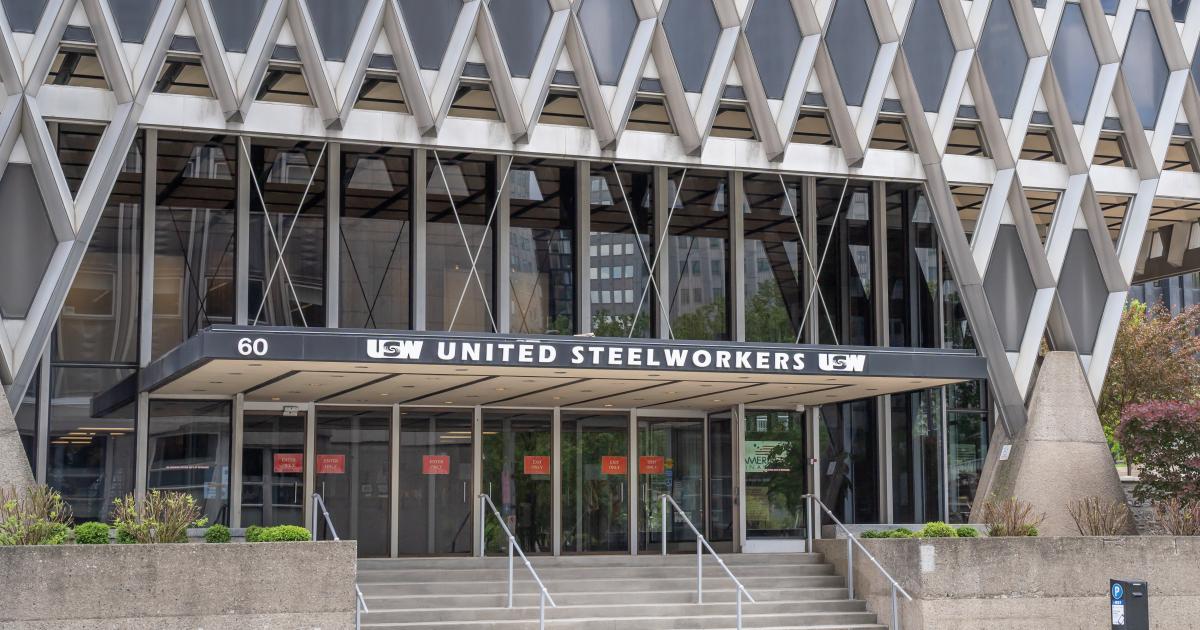
The drive to decarbonize the U.S. steel industry, while necessary, risks leaving behind an important part of the manufacturing workforce: unions.
The steelmaking industry is responsible for 11 percent of global carbon dioxide emissions, with the United States ranking as the fourth-highest producer worldwide. The U.S. steel production alone emits about 110 million metric tons of carbon annually, or the equivalent of operating more than 23 million gas-powered vehicles a year. This is largely due to coal-based blast furnace-basic oxygen furnace technology, the most emissions-intensive method of steel production.
The U.S. steel industry employs 131,000 individuals domestically. The number of steel workers represented by a union is difficult to estimate given the lack of publicly available data, but the United Steelworkers union (USW) represents all of the nine facilities operating coal-based steelmaking process.
The Inflation Reduction Act (IRA) earmarks about $6 billion to reduce GHG emissions in heavy industry under the Advanced Industrial Facilities Deployment Program, in addition to $370 billion for clean energy and climate change projects, including wind, solar and energy infrastructure build-outs, all of which require huge quantities of steel. The Biden administration’s goal to build 30 gigawatts of offshore wind energy by 2030 alone will create demand for more than 7 million metric tons of steel, which could add an 8 percent increase to our current production rates if all of that steel were domestically sourced.
Recent developments in U.S. policy and international green steel standards indicate that demand for low emissions steel production is primed for rapid growth. And while that may appear to be a blanket environmental win, the transition to meet new green steel standards is nuanced.
The Biden administration’s goal to build 30 gigawatts of offshore wind energy by 2030 alone will create demand for more than 7 million metric tons of steel.
Union workers who already fought hard for labor contracts that increase wages and improve benefits, may see higher emissions facilities become stranded assets, undermining decades of worker activism and organizing. Nucor Steel, for example, owns and operates 40 percent of the lower emissions electric arc furnace steelmaking plants in the United States, and actively opposes trade unions. Without government intervention, the green steel transition could inadvertently reduce the current number of union jobs.
And established precedent further fans the flames for union concern. Between 1960 and 1980, the U.S. steel industry saw a major technology shift. Open hearth furnaces, once the primary method of steel production, rapidly decreased from 88 percent national use to 10 percent due to newly available technology. As these new alternatives became safer and less expensive to operate, plant operators transitioned to newer tech or eventually went bankrupt. The workers in blast furnace-basic oxygen furnace plants today run the same risk unless steel plant operators and investors protect union jobs by switching to lower emissions steel technologies.
The IRA includes a domestic manufacturing tax credit, which will support domestic steel production through the build-out of these energy projects, and a program for prevailing wage rates, meant to support fairly paid jobs and protect union workers’ gains. However, the prevailing wage rates program applies to jobs in construction of energy projects, not the manufacturing of materials (steel) for these projects.
A report from the Center for American Progress found that the government can provide a fair and equitable transition for the steel industry by investing in the workforce in addition to clean technology. The government should require lower emissions steelmaking plants to enable and provide union jobs to help level the playing field between facilities transitioning away from coal-based steelmaking and those already operating cleaner technologies.
“The women and men of the United Steelworkers and other unions have spent nearly a century organizing for well-paid, safe, quality jobs. Decarbonizing the steel industry should not endanger these livelihoods,” explains Mike Williams, a senior fellow at the Center for American Progress.
This report also points out the important impact of the steel transition on community health. Coal-based steelmaking contributes significantly to air pollution and increased rates and severity of lung and heart disease in the populations most intimately exposed to it (steel workers and their communities). The Center for American Progress recommends that the government take air quality and other environmental concerns into account when investing in the transition, meaning ensuring federal and state funding allocated for reducing GHG emissions targets full decarbonization strategies, not marginal efficiency improvements.
The U.S. steel industry has already navigated one major technology transformation. The tax credits and standards for low emissions materials procurement that are inevitable in our net-zero future mean another one is approaching. While the IRA offers a promising outlook for the overall industry, the government must protect workers at lower emissions plants and operators of higher emissions steel plants must transition to cleaner technologies to protect the livelihoods and health of steelworking communities.
The post "Good jobs and green jobs should not be mutually exclusive in the US steel industry" appeared first on Green Biz








0 Comments